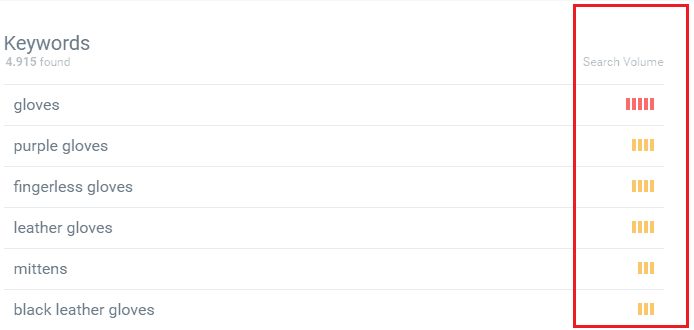Beginner’s Guide to Amazon Search Marketing (SEO)
When it comes to improving the searchability of your products on Amazon, it’s important to understand that customers have different search habits on Amazon compared to Google.
On Amazon, a customer can only find your product if the customer’s search enquiry is matched to one of your keywords. This means keywords will be the main driver for boosting product visibility in search results, and at the heart of your search marketing efforts on Amazon.
How does Amazon SEO work?
Amazon SEO consists of a two part strategy: keyword optimization & content optimization.
‘Keyword optimization’ refers to the process of researching all the relevant keywords for your product, and placing the keywords in the relevant fields in your product listing. However, Amazon’s ranking algorithm does not assign the same value for all keyword fields, which means you will need to prioritize your most important keywords accordingly. We will explain how to do so below.
‘Content optimization’ refers to the process of optimizing the copy and images of your product listing page. This step is critical for your conversion rate, and your goal here is to present all the relevant information about your product in the most compelling manner possible to the consumer.
Part 1: Keyword Optimization
1. Research all relevant keywords
In order to find the top keywords for your product, you will first need to research all the relevant Amazon keywords. You can use Sonar, our Amazon keyword tool, which enables you to sort your keywords by customer search volume, to help you prioritize the most relevant keywords for your product.

2. Add relevant keywords to your product listing
For most products, thorough keyword research should yield up to 200 keywords. The second step of keyword optimization is to add all your new keywords to your product listing page. However, not all fields are equally important in Amazon’s ranking algorithm. Below we’ve listed the order you should place your most relevant keywords:
1. Product title: The most relevant keywords for your product will go here.
2. Seller Central backend search terms: Your backend search terms are not visible to the customer. This is the second most relevant field. Note that the total number of keywords you may enter varies depending on the product category. For some it’s 400 bytes, others 2000 bytes and others again only 250 bytes.
3. Bullet points: While less important than the title and the backend search terms, the bullet points are also a good option to place keywords. However, be careful not to add too many keywords here as the bullet points should be concise and catch the attention of the shopper.
4. Product description: Lastly, you may also add keywords to your product description. In our experience, keywords added to the description have the least influence on rankings.
Part 2: Content Optimization
After you have optimized your keywords, you will want to make sure your content is also optimized. Content optimization will have a huge effect on your conversion rate, and your goal is to present all the relevant information about your product in the most compelling manner possible to the consumer.
This is where the copy for your bullet points and product description play an important role.
Read what questions users are asking about your product in the ‘Q&A’ section of your listing page to get a better understanding of what information is missing in your bullet points and/or product description.
Scan your product reviews for specific features that your customers love about your product and highlight those features in the product title. Also make sure to optimize your images, as quality images also play an important role in the buyer’s decision to purchase.
What are the benefits?
In short, keyword optimization will increase your product’s visibility on Amazon, and content optimization will help improve your product’s conversion rate. By ensuring both steps are met you will be able to increase your sales velocity, and in turn this will boost your product’s organic rankings in Amazon search results.
This will lead to more shoppers coming across your product, which will lead to more sales, which will boost your rankings even higher, creating a positive reinforcement loop for your product.
Of course this means you will also need to track your keyword rankings, to monitor how your rankings develop over time, and if you need to take action if you see that your competitor’s products have started to rank higher than yours in Amazon search results.
About the Author: Franz Jordan is the CEO of Sellics. This guest post was provided by Sellics and the views expressed herein are the authors’ alone.
If you liked this article and would like to engage with other small business entrepreneurs selling on marketplaces, join our [the_ad id=”41560″ inline =”1″]. You can also find us on [the_ad id=”41579″ inline =”1″], [the_ad id=”41573″ inline =”1″], [the_ad id=”41575″ inline =”1″], and [the_ad id=”41577″ inline =”1″] or sign up for our newsletter below.
SIGN UP. BE INSPIRED. GROW YOUR BUSINESS.
We do not sell your information. You can unsubscribe at any time.


This article is a part of our Leadership Series, which features industry experts sharing valuable insights for small business owners who sell online. The opinions expressed in this contribution are solely those of the author(s).